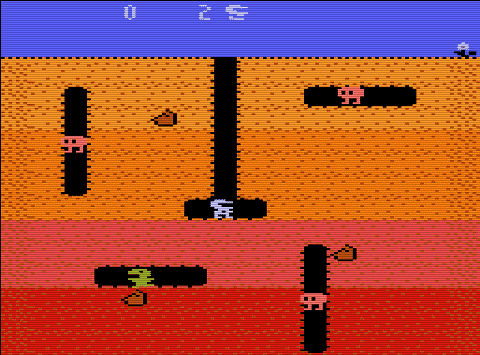Post by Samantha Simpson

There’s something more at work in the phenomenon of nostalgia than you’ve mentioned here, although I agree with what you’re saying about the sanitizing aspects of time on difficult material. The aspect of the dialogue that I’m interested in is the appeal of Atari as a subject for nostalgia. There are certainly ways in which this works like any other kind of nostalgia- Atari can be read as a symbol of a technological childhood or as a tool to imagine a culture that was technologically naive.
For a generation slightly younger than me, atari was a first experience of the wonder of technology. I remember feeling something similar to what I imagine they felt about atari when I was about five years old watching the first digital clock my family got flip over the cards that miraculously told the time without a round clock face. Atari has limited nostalgia value to me, but I have great affection for the early text based computer games I played on the mainframe computers at my dad’s office, and I’m all over Dig Dug.[See image.]
The production of nostalgia, though, is particular to each generation, and I have begun to think it’s predictable. I suspect that you can figure out what people will be nostalgic about (to a certain extent) based on their age. Nostalgia for products serves to form a community identity, and if you’ve ever seen a group of people talk about an old TV show that’s no longer on TV, you’ve watched people form bonds over a common groundof childhood pleasure that’s quite powerful.
Ask a college student about Alf or Fraggle Rock. Strawberry Shortcake & My Little Pony, if they’re a little older. Ask my generation about Fantasy Island, Love and Rockets, adidas, and Mr. Zogg’s Sex Wax t-shirts. It’s not that these things stand the test of time; our nostalgia serves as a shorthand way of sharing a sense of ourselves as children. Remembering how freaked out I used to get when Mr. Rork (sp?) got the scary magic eyes is funny because it marks a passage of time- I can laugh at how simple I was back then, and I can expand my own dumbness to imagine a culture in childhood. I can think I was young in a time that had such dumb TV as will never been seen again, blissfully ignoring Charmed and Touched by an Angel, which will no doubt become the embarrassing subject of a new generations’ nostalgia.
There’s also a much better, more creepy explanation for this phenomenon in Michael Thompson’s 1979 bookRubbish Theory and in Arjun Appadurai’s work. Both talk about commodity theory- Thompson’s book elucidates the way commodities move in value over time. Thompson says that objects have a life cycle of value. First they’re new, rare, and exciting. Valuable. Then they saturate the market to greater and greater degrees and lose value. Then they become so out of fashion that they become invisible. No one thinks about them, they’re totally dismissed. They become trash. Many of them get thrown away. Then some collector finds one, thinks they’re rare and neat, publishes something to that effect and they gain cultural value at a way higher status than they ever had. Atari certainly went through that cycle. I’m looking for barrettes with ribbons hanging off the ends any minute now.
I think that’s what’s driving the fashion for flat, pixelly grahics, too; it’s a mini retro craze for low tech high tech. (Check out flipflopflyin.com for a master of the big pixel.)
Samantha Simpson is a Philadelphia artist whose work was seen recently at Gallery Joe and Spector.









